35th BATTALION AIF
Private: 1927 Samuel Ernest Kennedy BRADLEY.
Born: 21st June 1894. Glebe via Sydney, New South Wales, Australia. Birth Cert:13224/1894.
Married:
Wife:
Died: 20th August 1942. Rozelle, New South Wales, Australia. Death Cert:29199/1942.
Father: Samuel Richard Bradley. (1861-24/04/1947)
Mother: Margaret Bradley. nee: Wood. (1868-19/11/1938)
INFORMATION
Kennedy Bradley served with the 33rd Infantry prior to his enlistment with the AIF on the 3rd April 1916 at the Depot Camp at Goulburn to F Company. On the 5th May when he was transferred to the Rutherford Army Camp where he was allocated to the 2nd Reinforcements 35th Battalion AIF.
Kennedy embarked from Sydney with the 2nd Reinforcements on the 4th September 1916
21-22 August 1918.
"Zero Hour, August 21st, at thick fog lay across the front. The allied 3rd Army's Guns were clearly audible to the north. As reports filtered to the waiting Diggers, they learned that the Germans had been surprised, all objectives had been achieved and 2,000 prisoners had been taken. Because of the comparative ease of the victory of that first phase, it was decided to extend the second phase of the objectives. Gellibrand issued orders to continue the assault if the British 47th, on the Australian left flank, were successful and Bray was cleared. Unfortunately these orders, being last-minute, did not arrive at all units.
For the Australians their first active involvement in the action was planned for dawn on the 22nd August, at 4:45 am. Zt 2:20 am the Germans, possibly anticipating an attack, opened up with a barrage of artillery which went for an hour. The 33rd was being held in old trenches near Tallis Wood. It was a bright moonlit night, and officers and scouts laying tapes to mark the jumping off point could plainly see the advancing Battalions 800 yards away. A second enemy barrage fell at 4:00 am. This time the 33rd were caught on the Meaulte-Etinechem Road where they had assembled. The men flattened themselves as shells landed around them on the road., continually showering them with dirt. For some reason a forward German post asked their Gunners to lift their range, to the great relief of the 33rd, but it wasn't such a good move for the 3rd Division Machine Gunners who were formed up in the rear ready to cover the flanks, nor for the reserve 11th Brigade. Both reported casualties from the shelling. The 33rd had been lucky to receive only twenty casualties, the 35th a mere six.
The road, well behind the forward posts, had been chosen as the starting point for the simplicity's sake. These posts were withdrawn just before the opening barrage, which began on schedule. From there the 'creep' was slow, the barrage advancing only a hundred yards in four minutes. A number of phosphorous shells were dropped along the way to form a smoke screen, and this, combined with the dust and early morning mist, cut visibility to only ten yards. The enemy counter barrage was fired within two minutes of the opening, but before the area was taken the Germans had cleared out. The 33rd met with a few enemy Machine-Gun posts in the valley bottom, but these were quickly outflanked and subdued. A forward German Battalion Headquarters, of the 124th Imperial Reserves , was also captured, along with its commander, liaison officers, forty men and four Machine-Guns.
Shortly afterwards our own wounded commenced to arrive at the Dressing Station and the Regimental Medical Officer Captain: William Johnstone BINNS. and staff commenced to get busy. He was assisted by Battalion Pardre Chaplain: 12991 Walter Emra Kingscote BIRKITT who was an old field ambulance man. Lieutenant: 2559 Robert Horner FLETCHER- wounded by an aerial bomb - was the first officer to appear and he was able to give us some idea as how things were going. About this time word was received that Captain: Thomas William TOLLIS of C company and Lieutenant. Alfred Gordon FARLEIGH of B Company had been killed by shots from our own barrage".
(Never a Backward Step; Edwards 1996)
Samuel was Wounded in Action on the 22nd of August 1918 when he received a Severe Gun Shot Wound to the Neck and was invalided to England where he was admitted to the Bath War Hospital on the 31st of August 1918, and after being discharged was returned to Australia on the 20th December 1918.
After returning to Australia he served with Special Services enlisting on the 17th May 1919 as a GUARD for ENEMY DEPORTEES from Australia to Europe with the service number 85769. He embarked from Sydney on board the S.S. "Kursk"
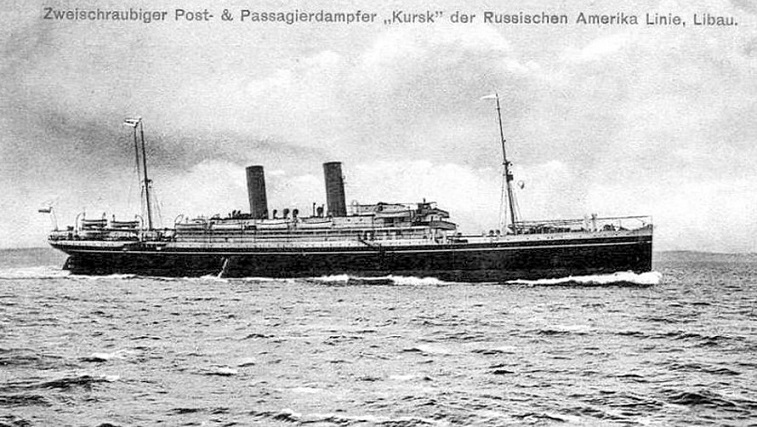
S S KURSK
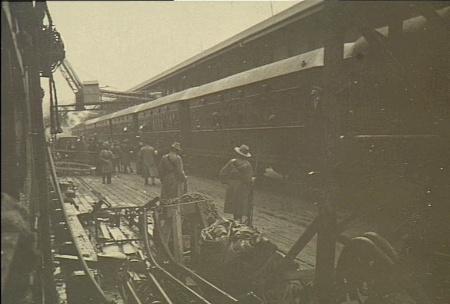
Australian Soldiers stand guard at Darling Harbour, Sydney as German Deportees arrive from Concentration Camps at the wharf for their return to their homeland. (Australian War Memorial)

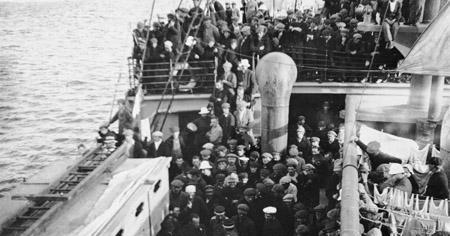
German Deportees for Australia en route to Germany. (Australian War Memorial)
Samuel disembarked in London on the 23rd of July 1919 and spent the next few months in England before embarking from the UK on the 3rd September 1919 on board HMAT "Barambah" and disembarking in Melbourne on the 26th of October 1919. Samuel en trained to Sydney and was later discharged from the AIF on the 19th September 1920.
Victory Medal to PTE 1927 K BRADLEY was acquired in May 2019 and is now in the Harrower Collection.
Family Information
Kennedy was a single 21 year old Harness Maker and was apprenticed at H Hillier on Parramatta Road and lived at 71 Burren Street, Newtown via Sydney, N.S.W. upon enlistment with the AIF.

Military Records
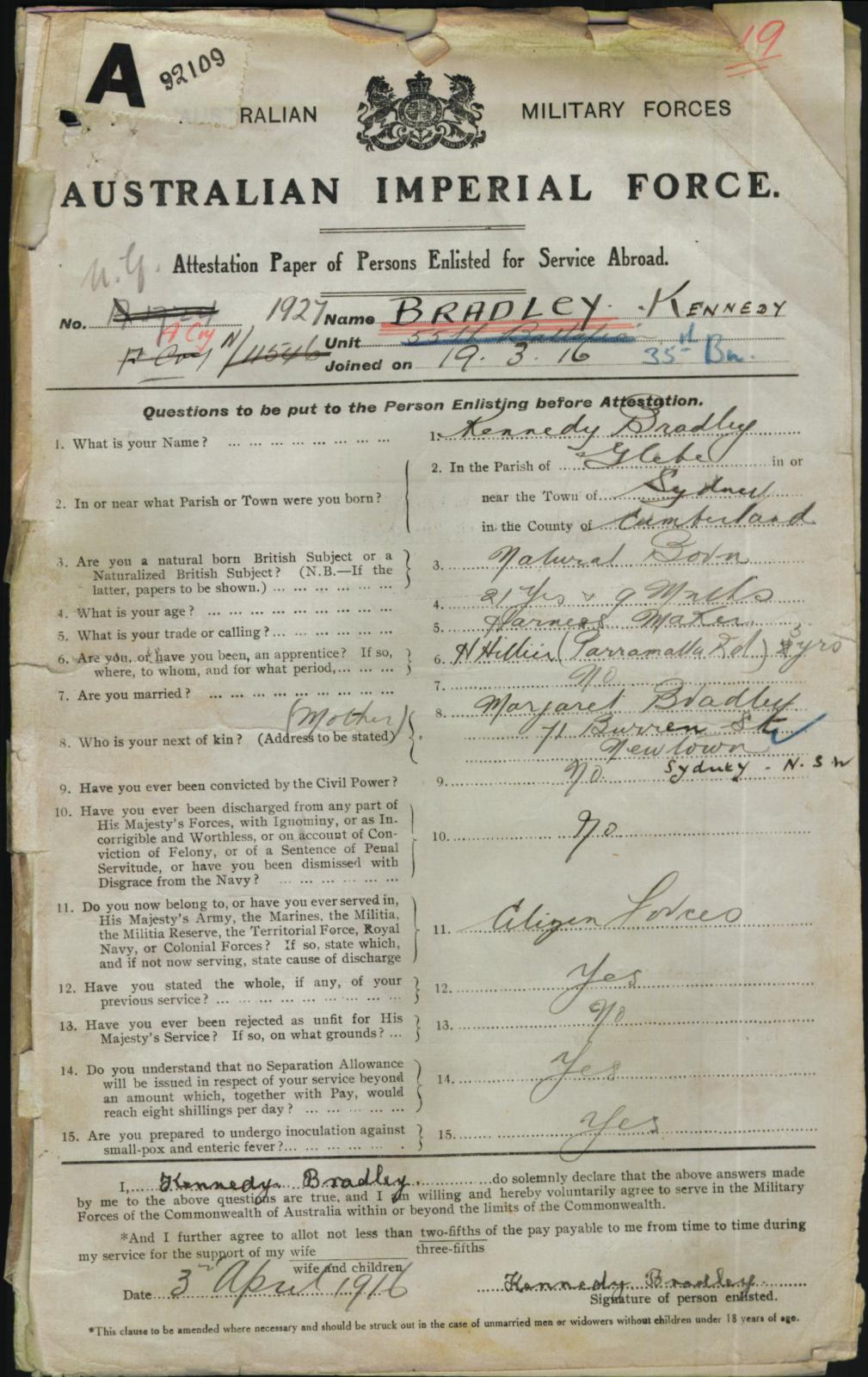
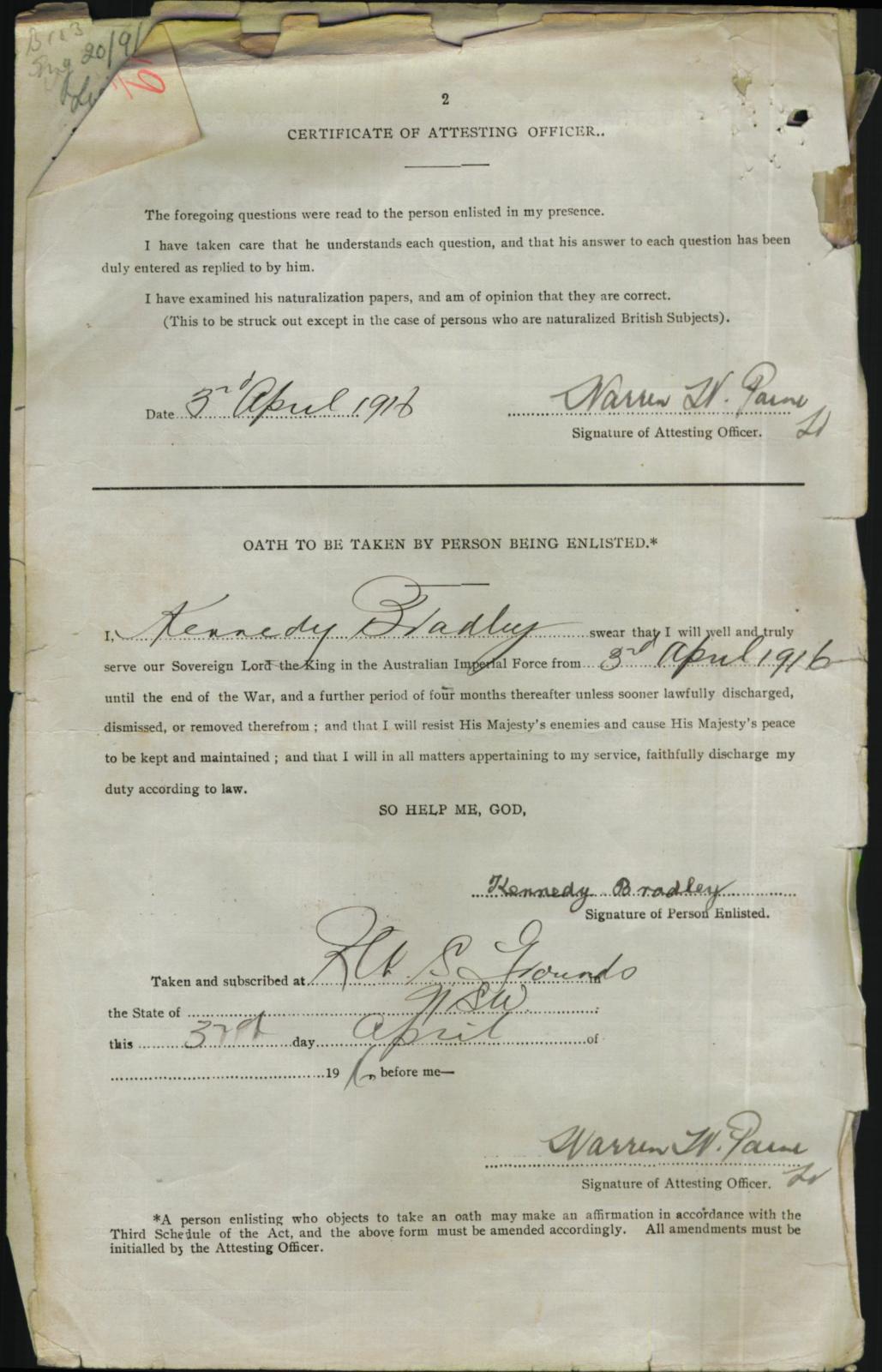

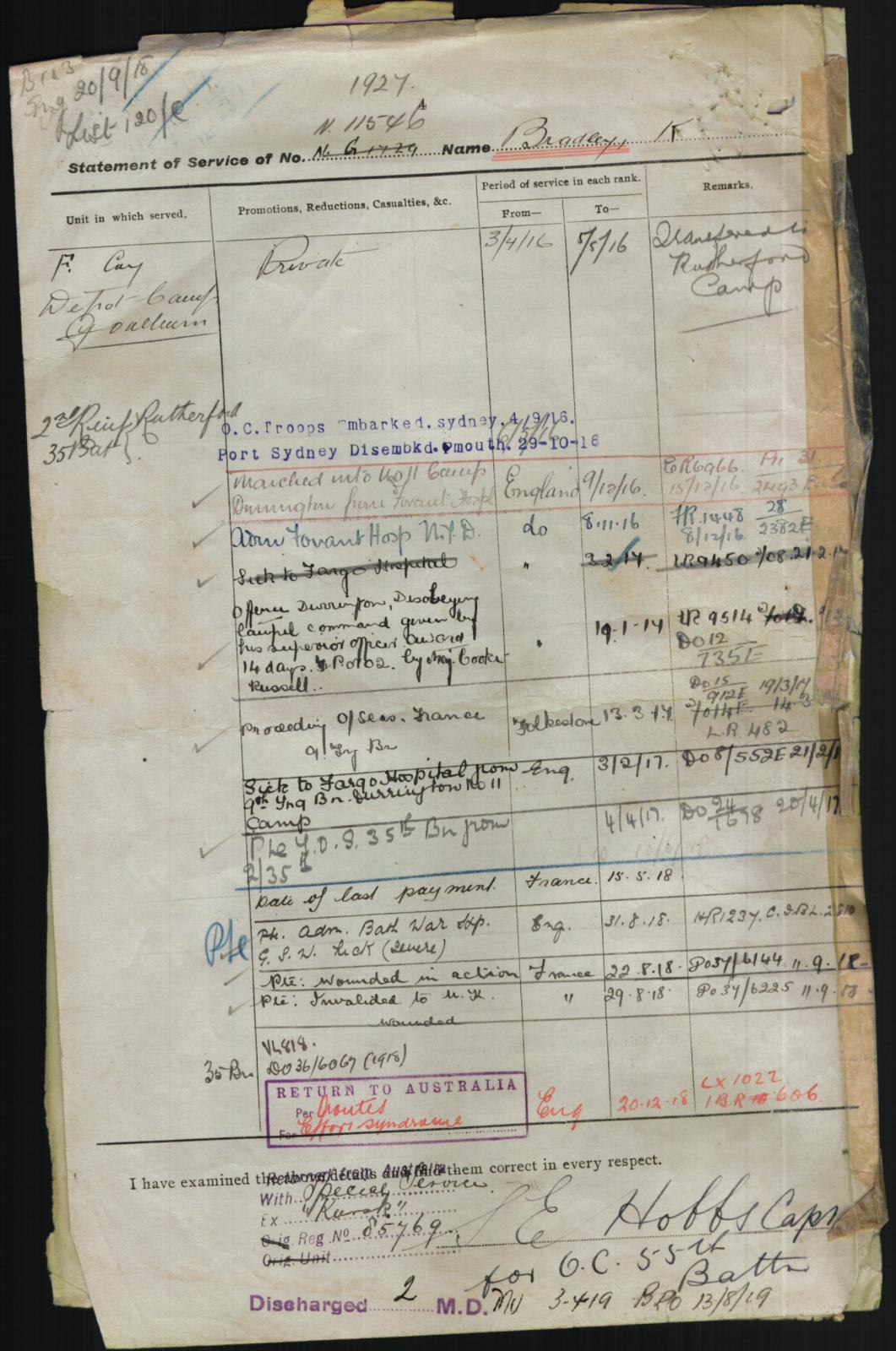
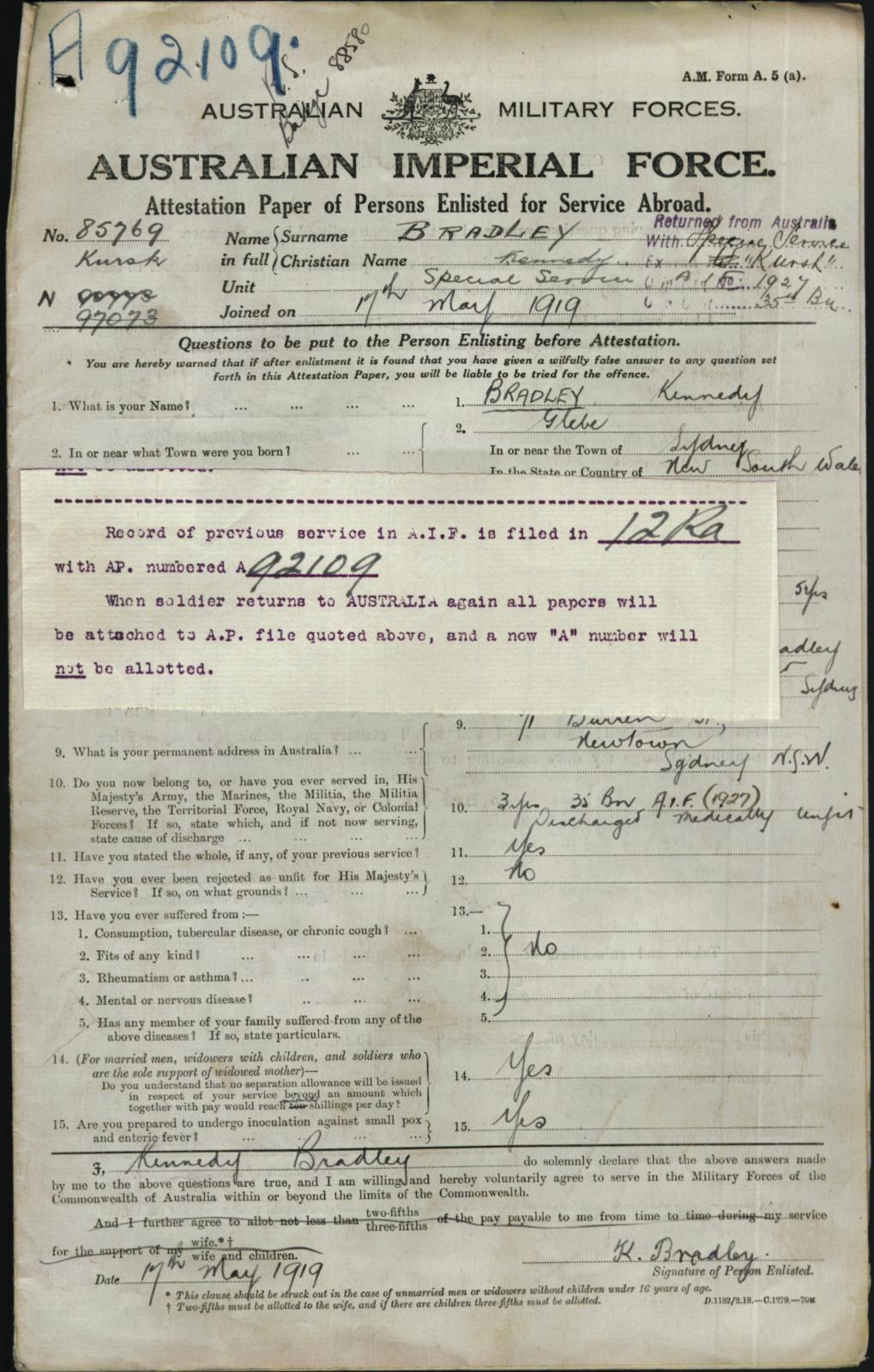

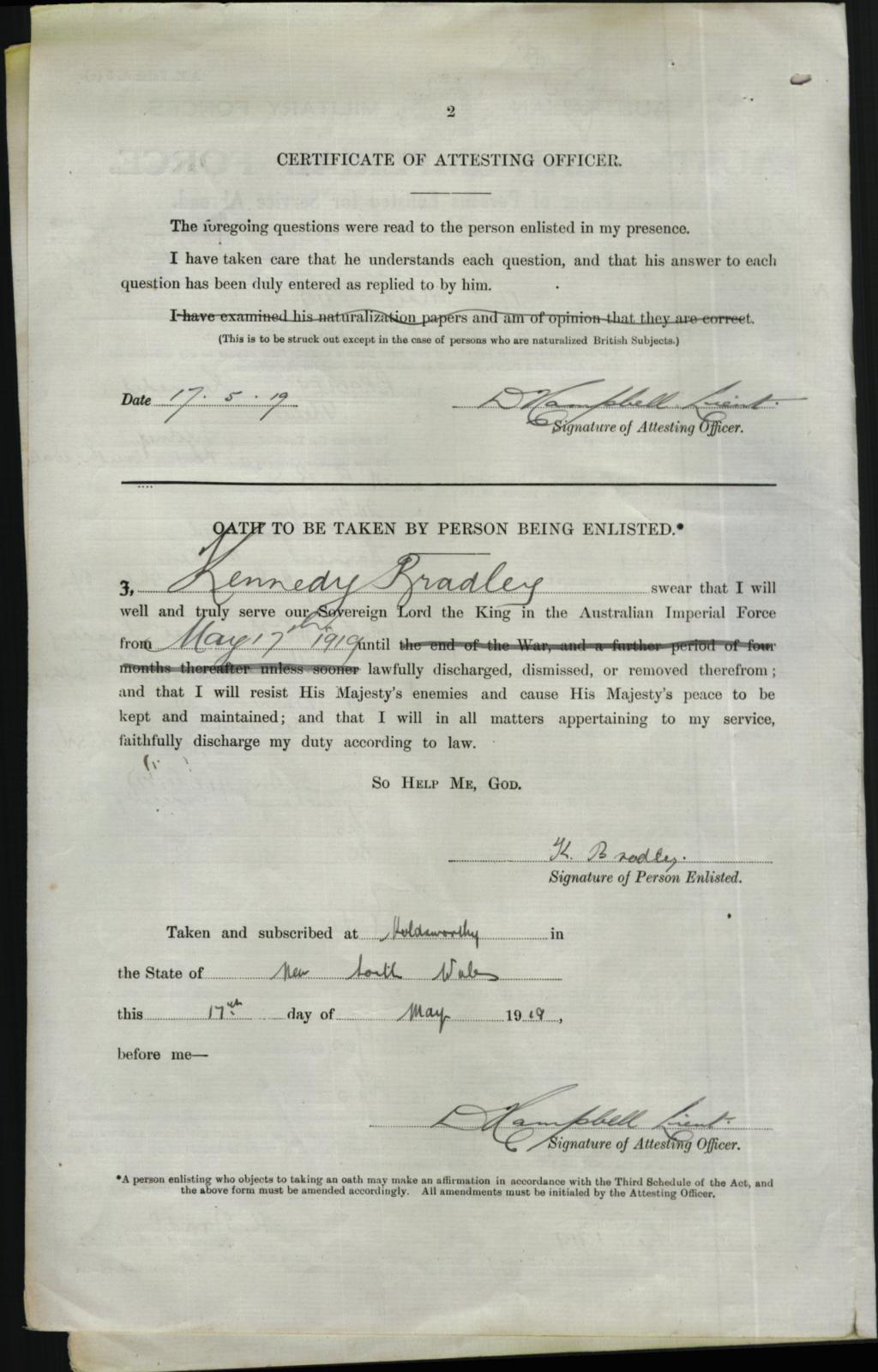

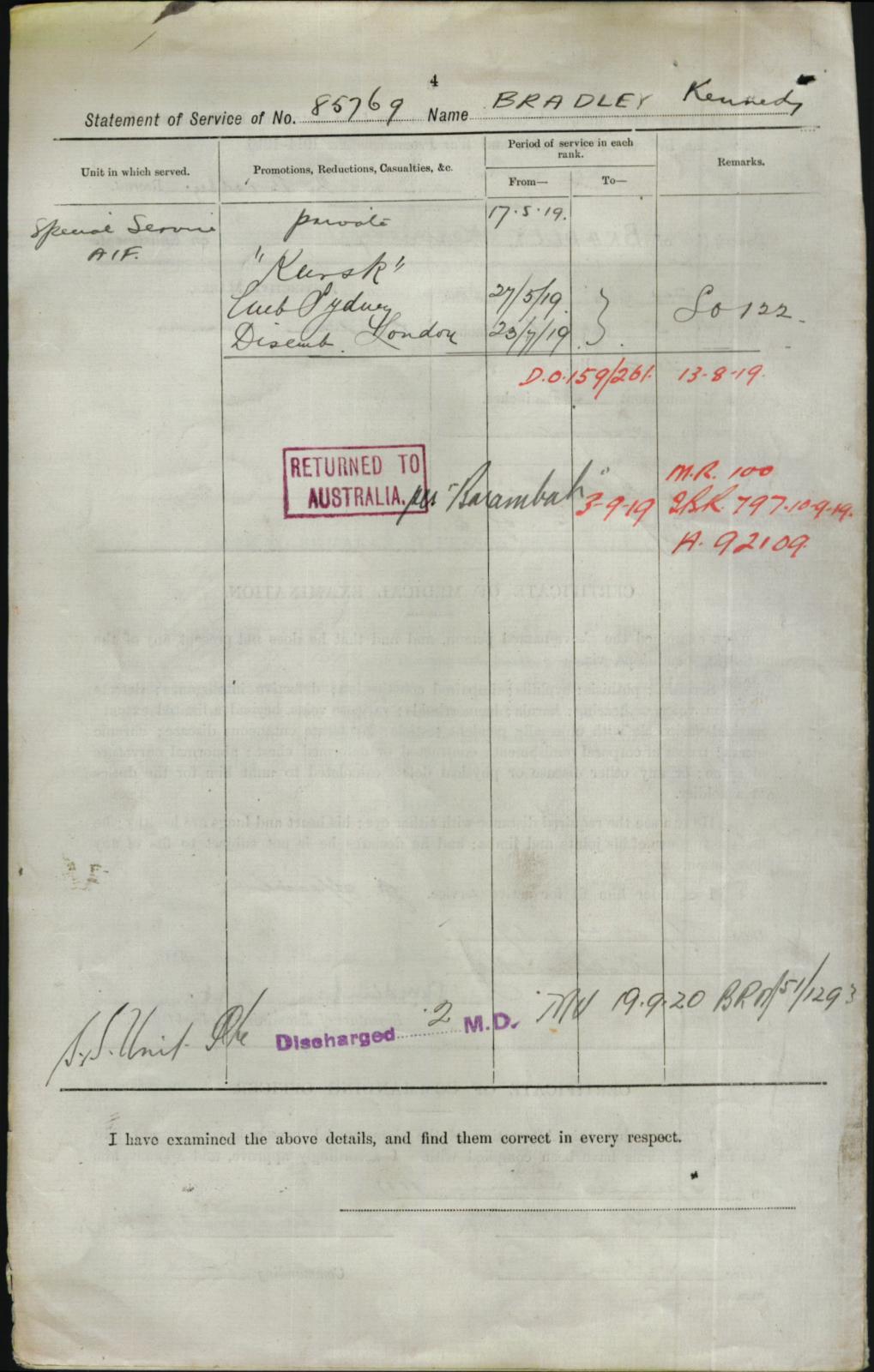


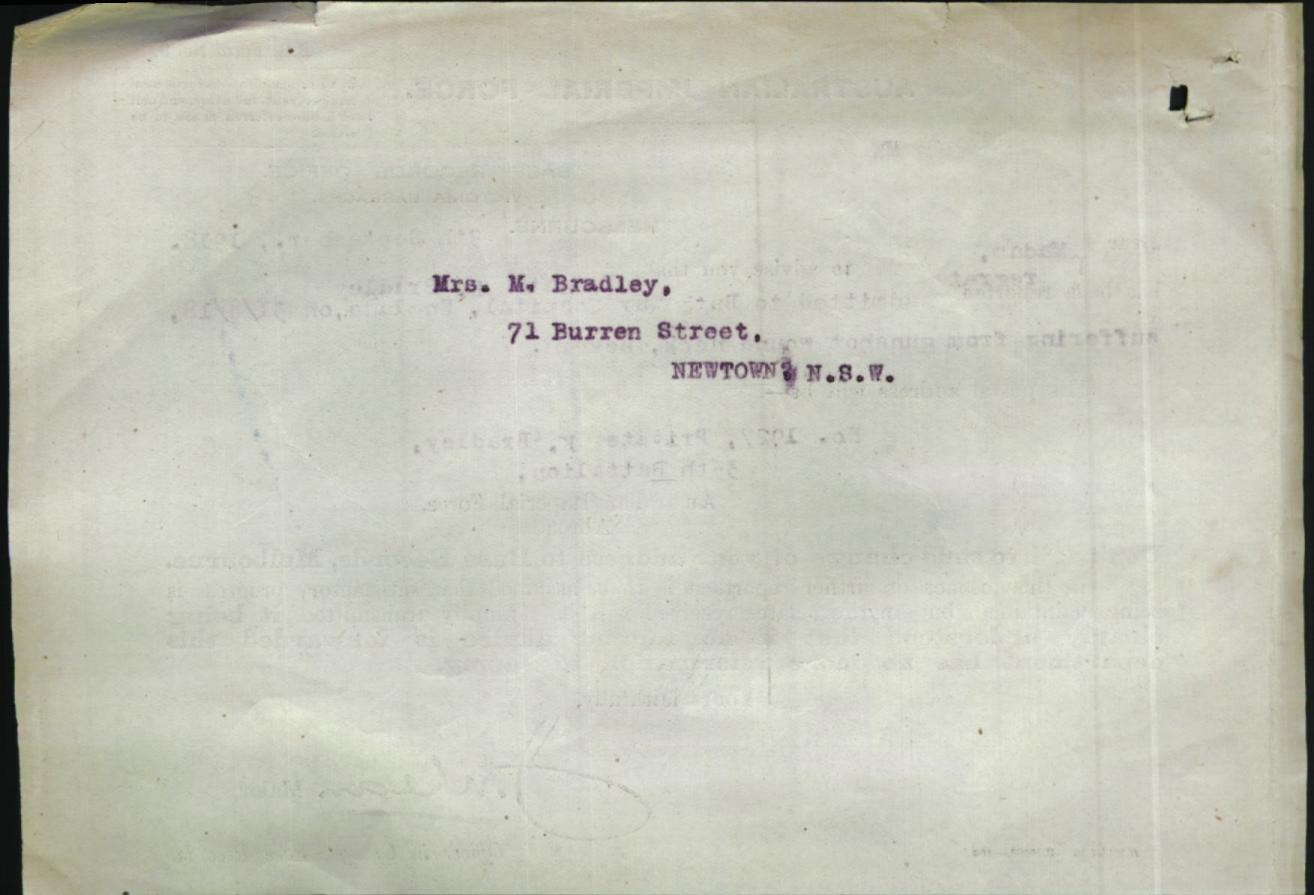

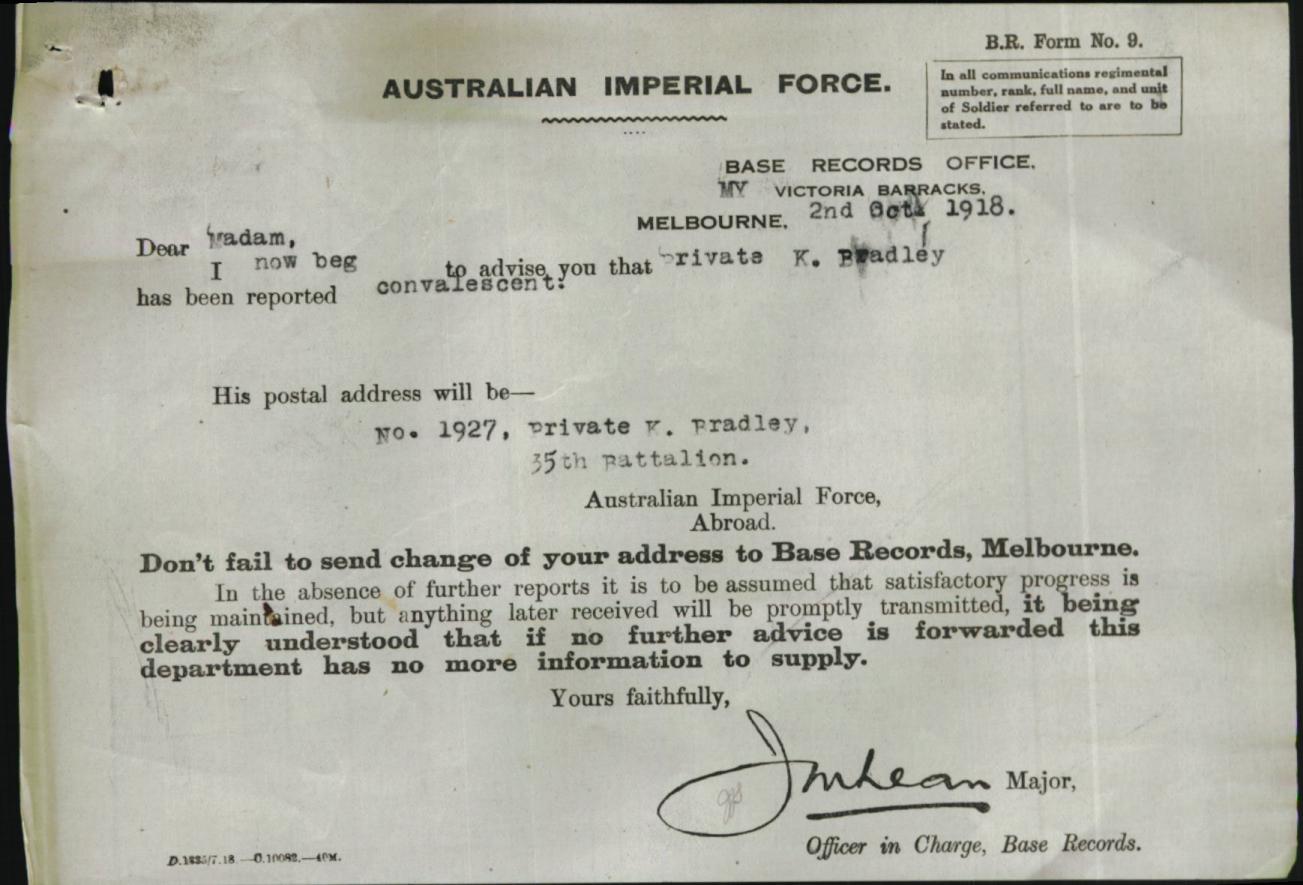

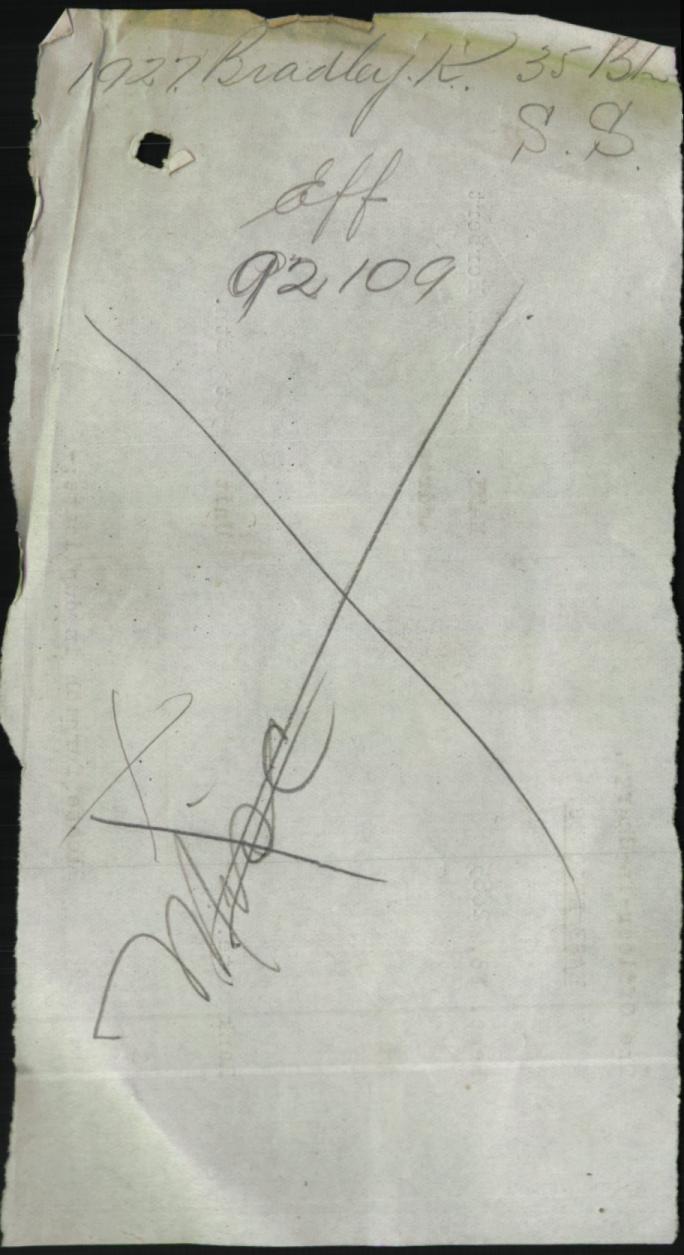
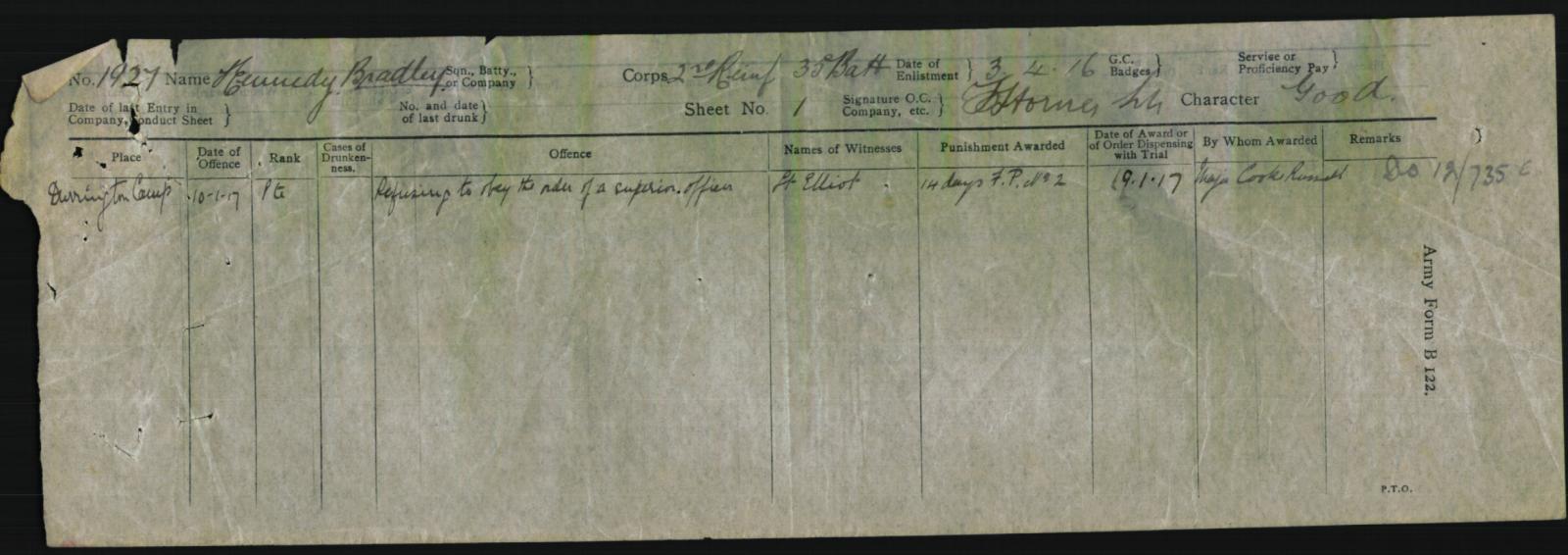
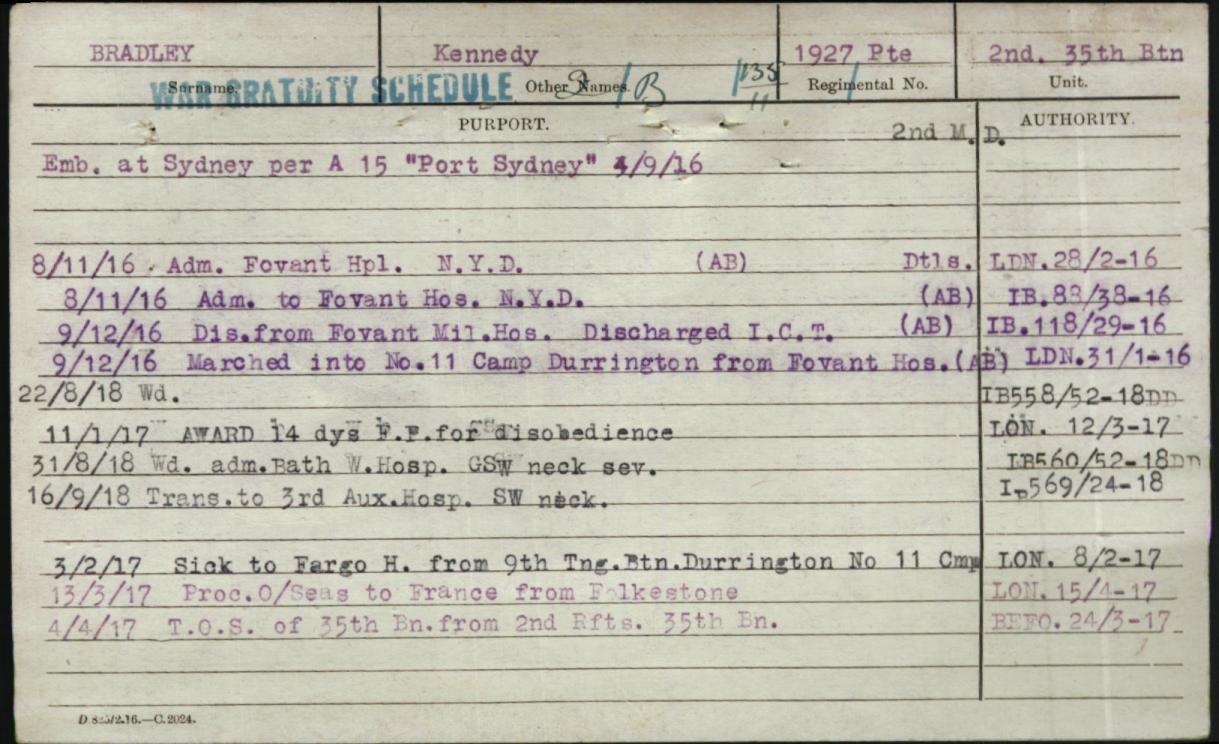


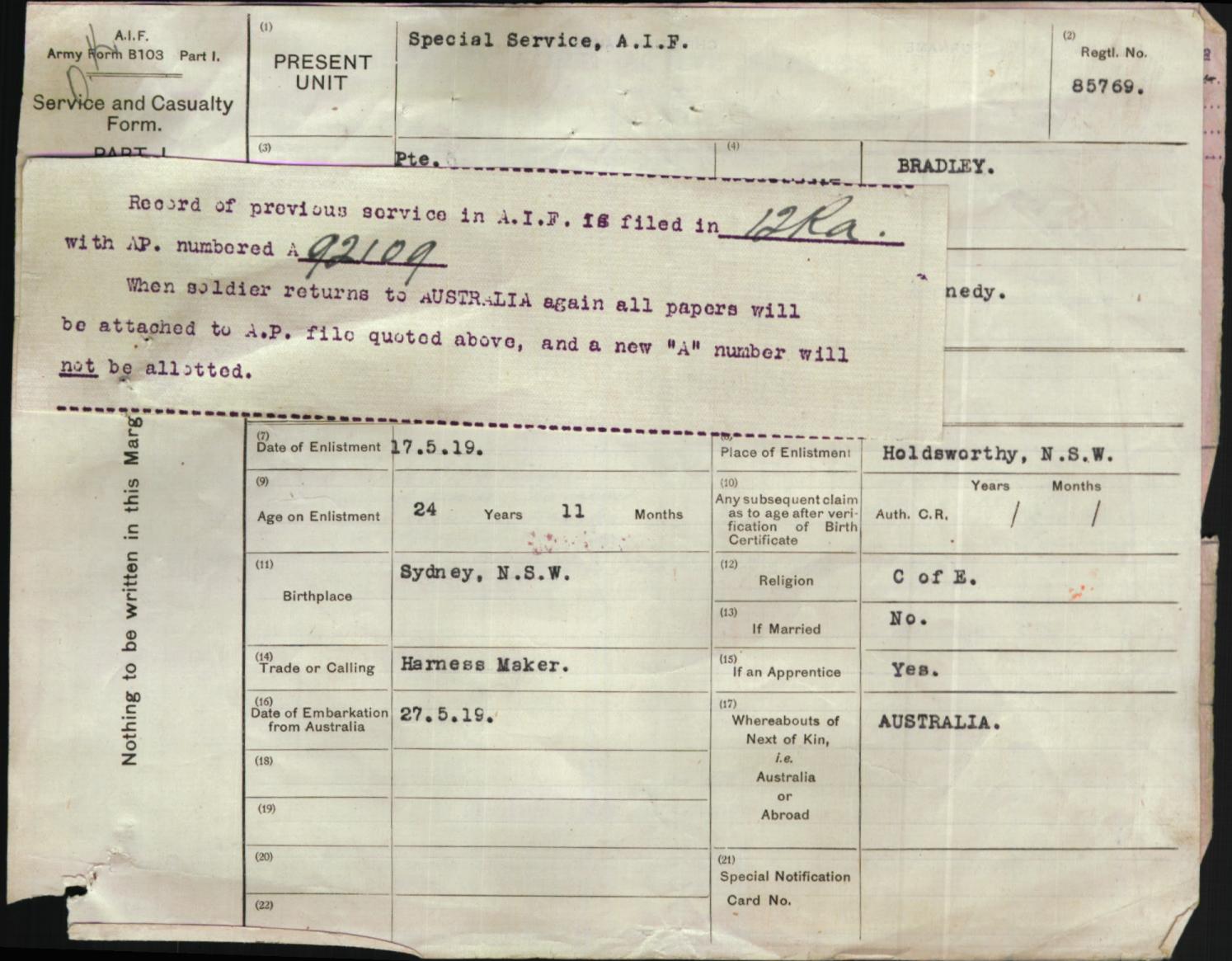

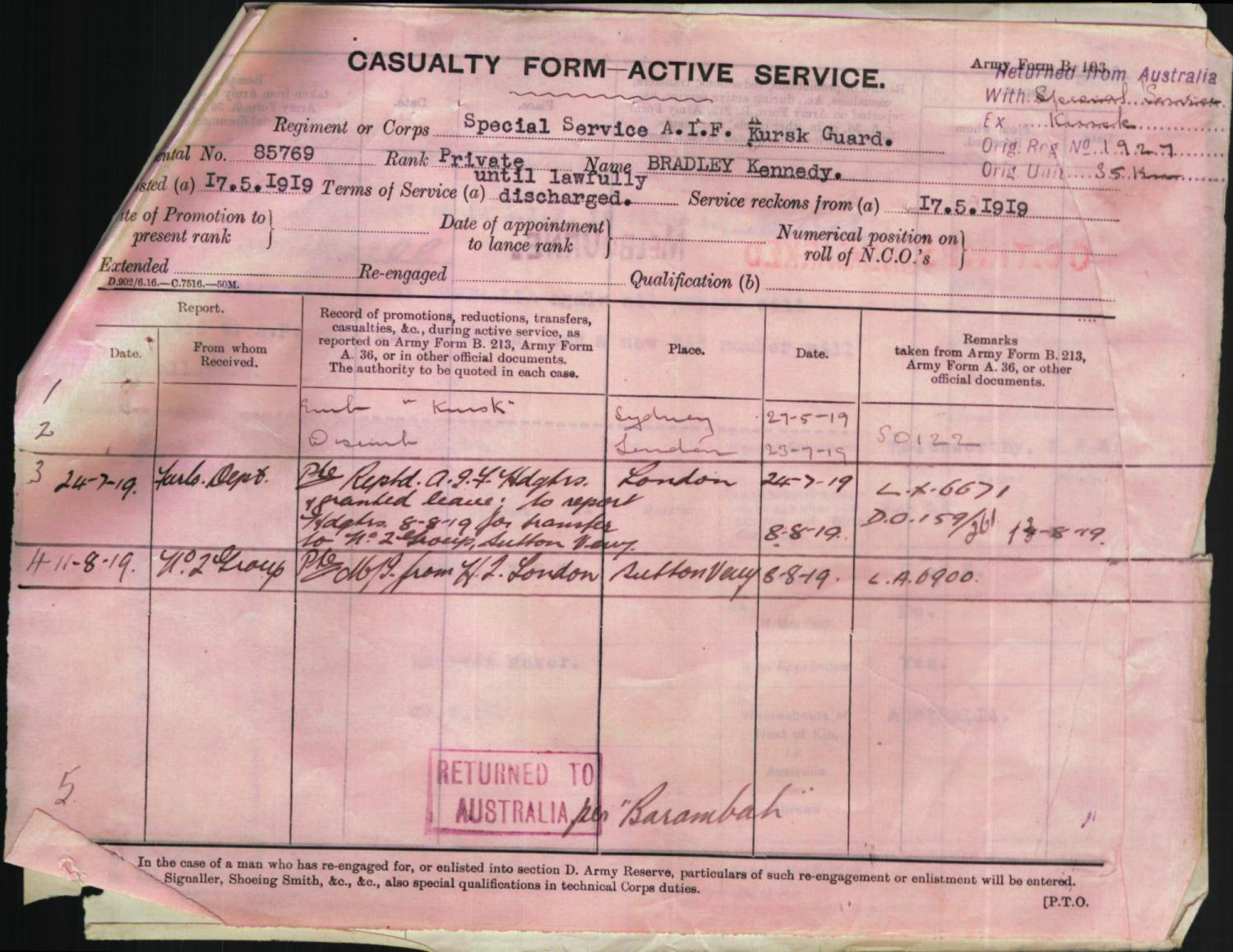
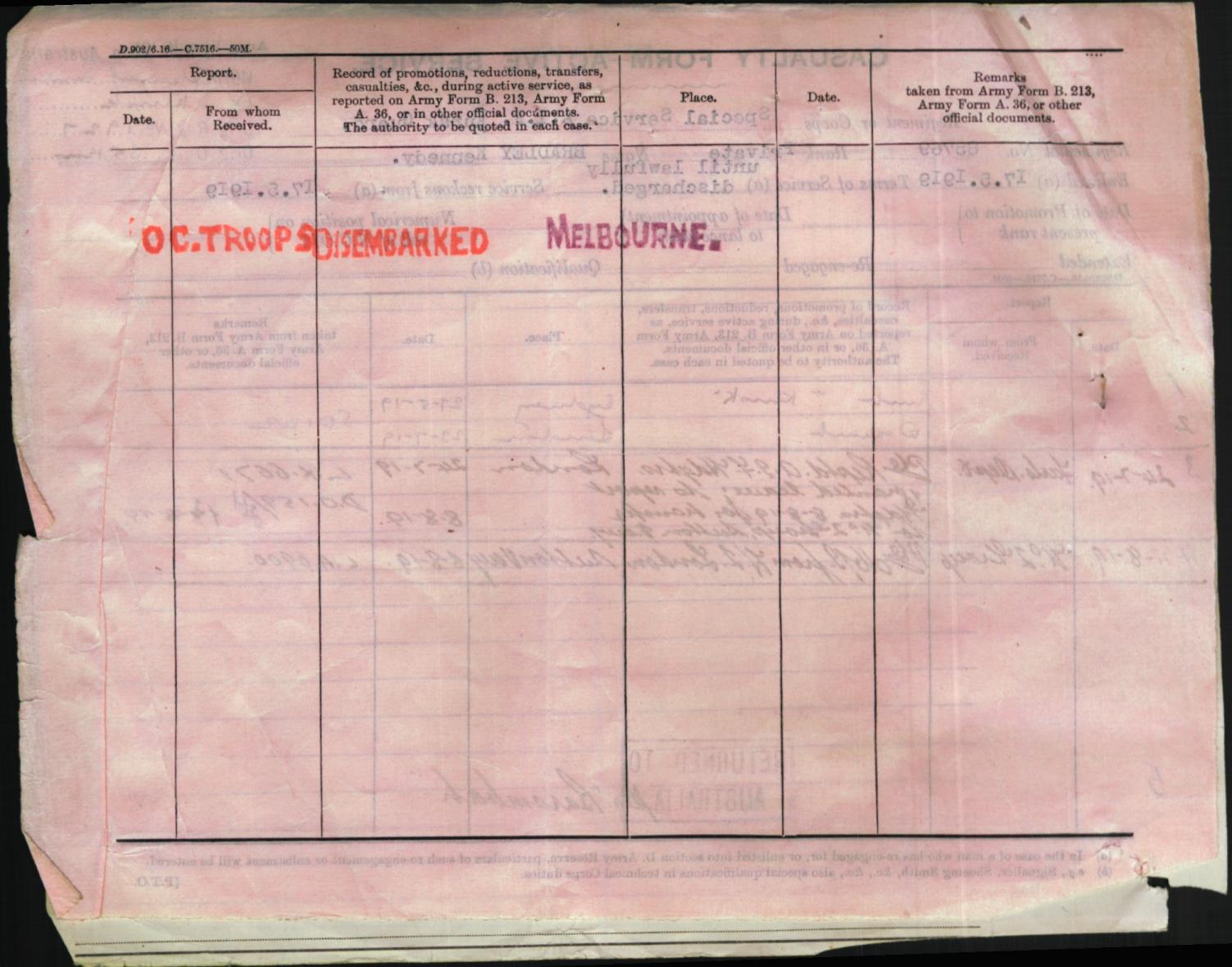
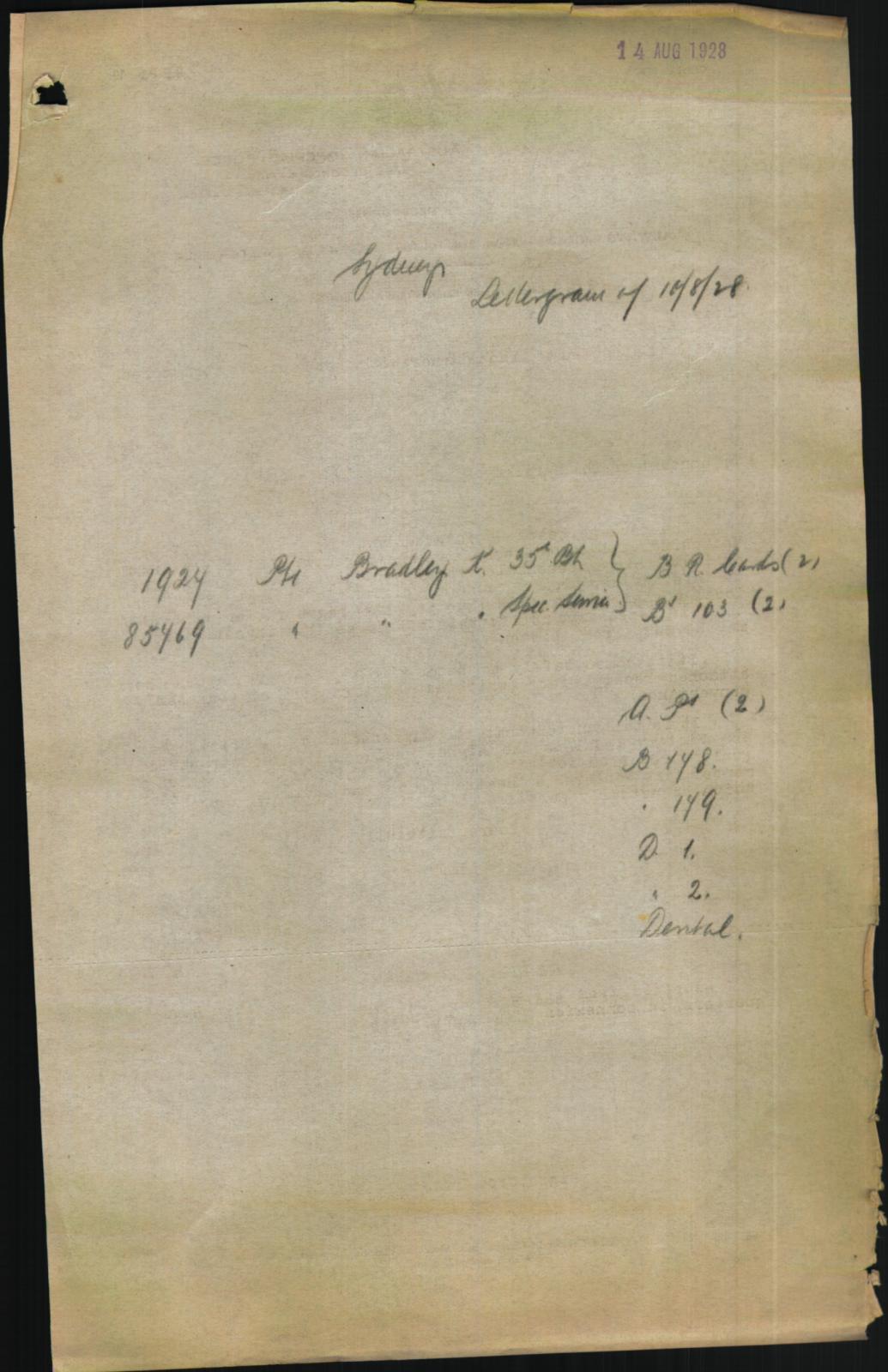



Under Construction: 08/08/2019.






































































































































































